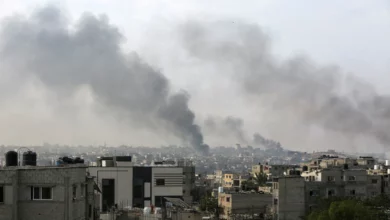
The Berlin conference was held in an attempt to resolve the conflict in Libya.
The five permanent members of the UN Security Council participated in addition to Egypt, Turkey, Algeria, the United Arab Emirates, and Morocco – which had hosted the Skhirat Conference aiming to reach a political solution which the parties in the conflict have not committed to.
Tunisia was also invited at the last minute at the Berlin Conference and apologized for not participating, despite its long borders with Libya.
Certainly, the reasons for the Skhirat agreement’s failure remain as it is. The parties to the conflict changed only in their relative weights, i.e. the success of Haftar’s forces in controlling about two-thirds of the Libyan territory and about one third of the population, while the Government of National Accord (GNA) controls one-third of the land and two-thirds of the population.
Libya’s crisis is basically internal (even if it is invested by foreign countries) and is due to the fact that it is not just a conflict between the political or armed factions, who are required to agree and sign a peace agreement, but rather comes from the absence of state institutions. There are no police except for the militia, nor professional institutional army (although the Libyan National Army is closest to that) and there is no independent or independent judiciary.
Therefore, any political agreement comes with no mechanism to implement on the ground as the law enforcement powers are mostly dominated by the militias.
We must know that the number of Libya’s main militias is 30, and that within each of them are dozens of factions and groups – with some estimates at about 1,600 – most of them in Tripoli.
And this isn’t even without taking into account the extremist Syrian militias sent by Erdogan’s government, estimated by the British Guardian newspaper to be at about 2,000 fighters.
Tripoli includes dozens of main militias, such as the Tripoli Revolutionaries Brigade which is deployed in the east and center of the capital, and the Special Deterrence Force which includes Salafi forces and is also stationed in the east of the capital, playing the role of police there.
There is also Libya Dawn, a Muslim Brotherhood militia which includes the Central Libya Shield militia, the Libya Revolutionaries Operations Room, and other brigades from Misrata.
Some neighborhoods are also under militia control, for example the Abu Salim Battalion, which controls the Abu Salim neighborhood south of the capital, and the Nawasi Islamic Brigade which controls the naval base.
The Berlin conference’s final draft statement includes six items related to economic and security reforms, along with a ceasefire and the application of an arms embargo, obliging representatives of more than ten countries invited to participate in the conference to return to Libya’s political process and adhere to international humanitarian law, and regarding the National Oil Corporation (based in Tripoli) as the sole entity responsible for selling Libyan oil.
The draft final statement also indicated the need for militias to surrender their weapons, and it’s here the question arises: to whom will these weapons be surrendered to?
The Libyan National Army? Unthinkable. To international forces? Unlikely.
The Berlin conference is an opportunity for a political solution after previous political and military agreements faltered.
Will this conference be invested by everyone?




